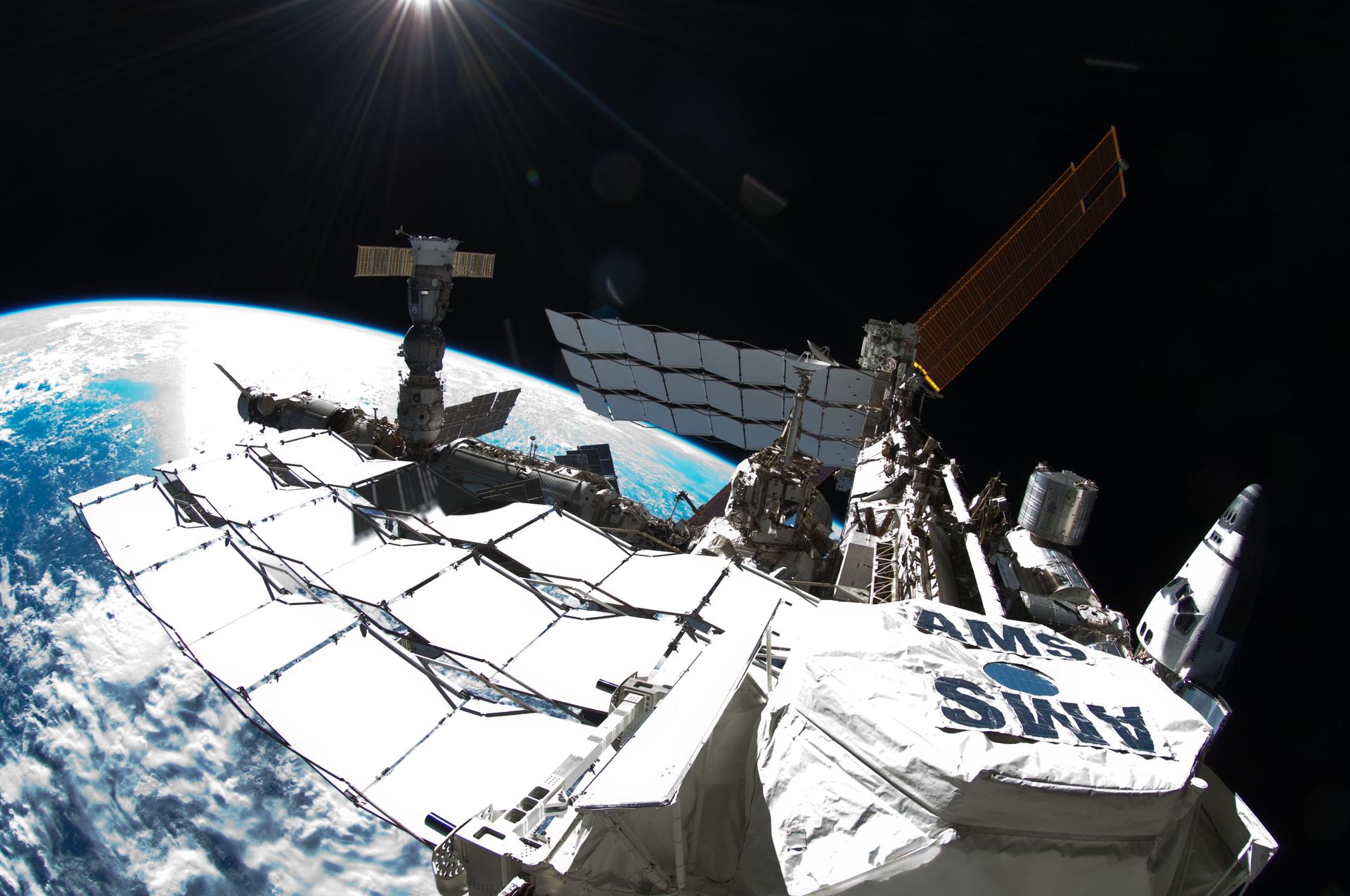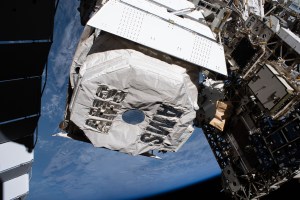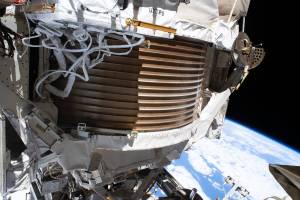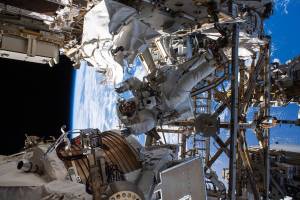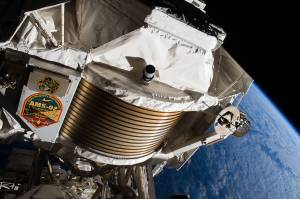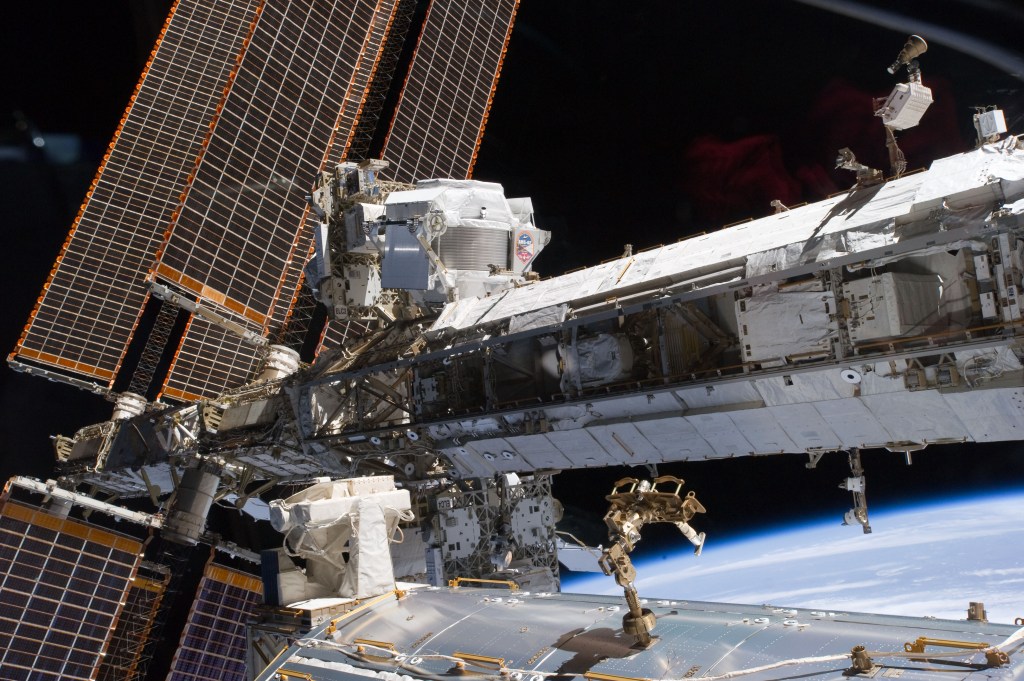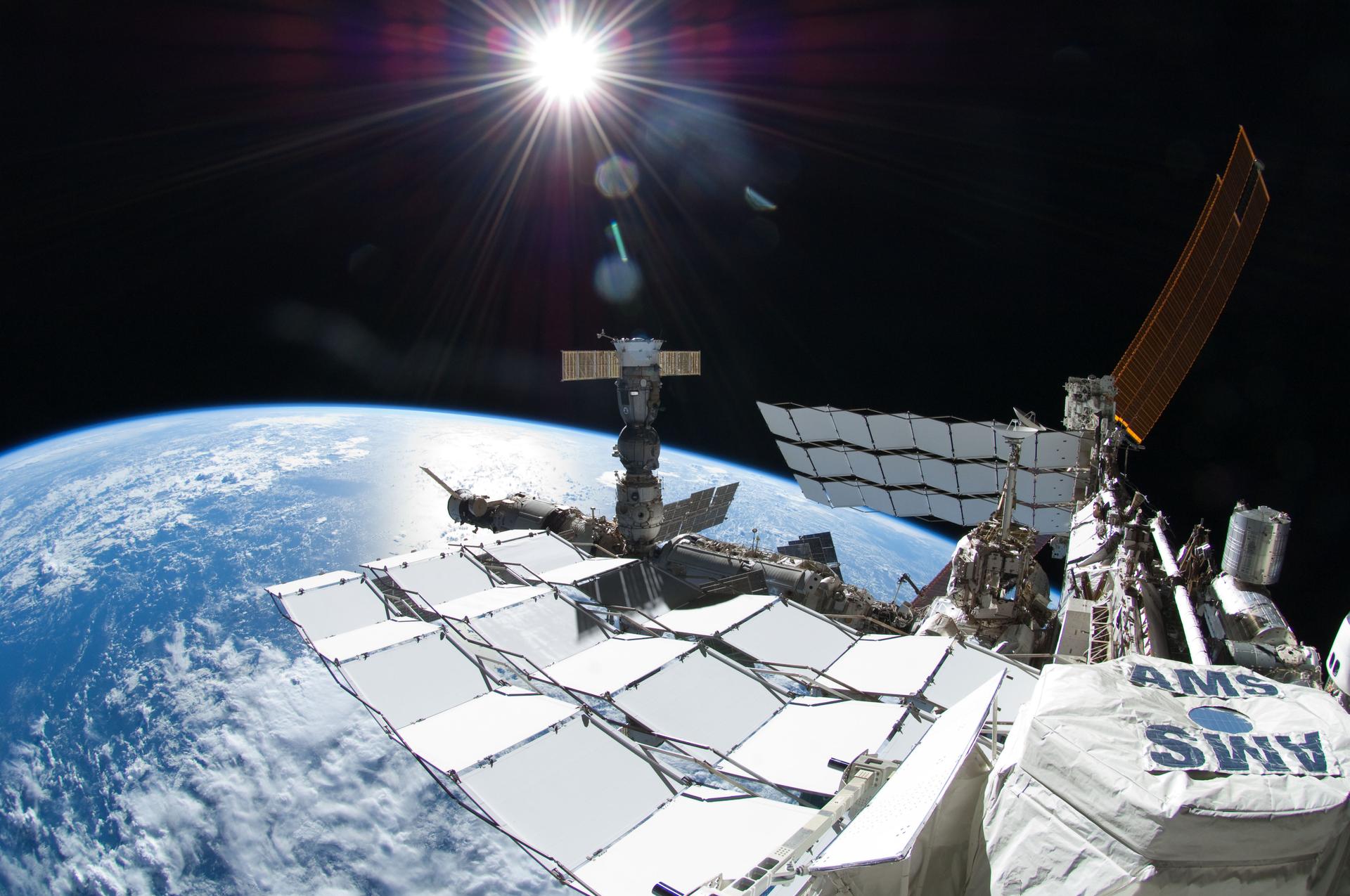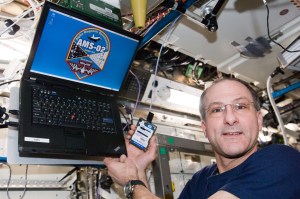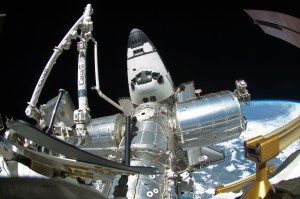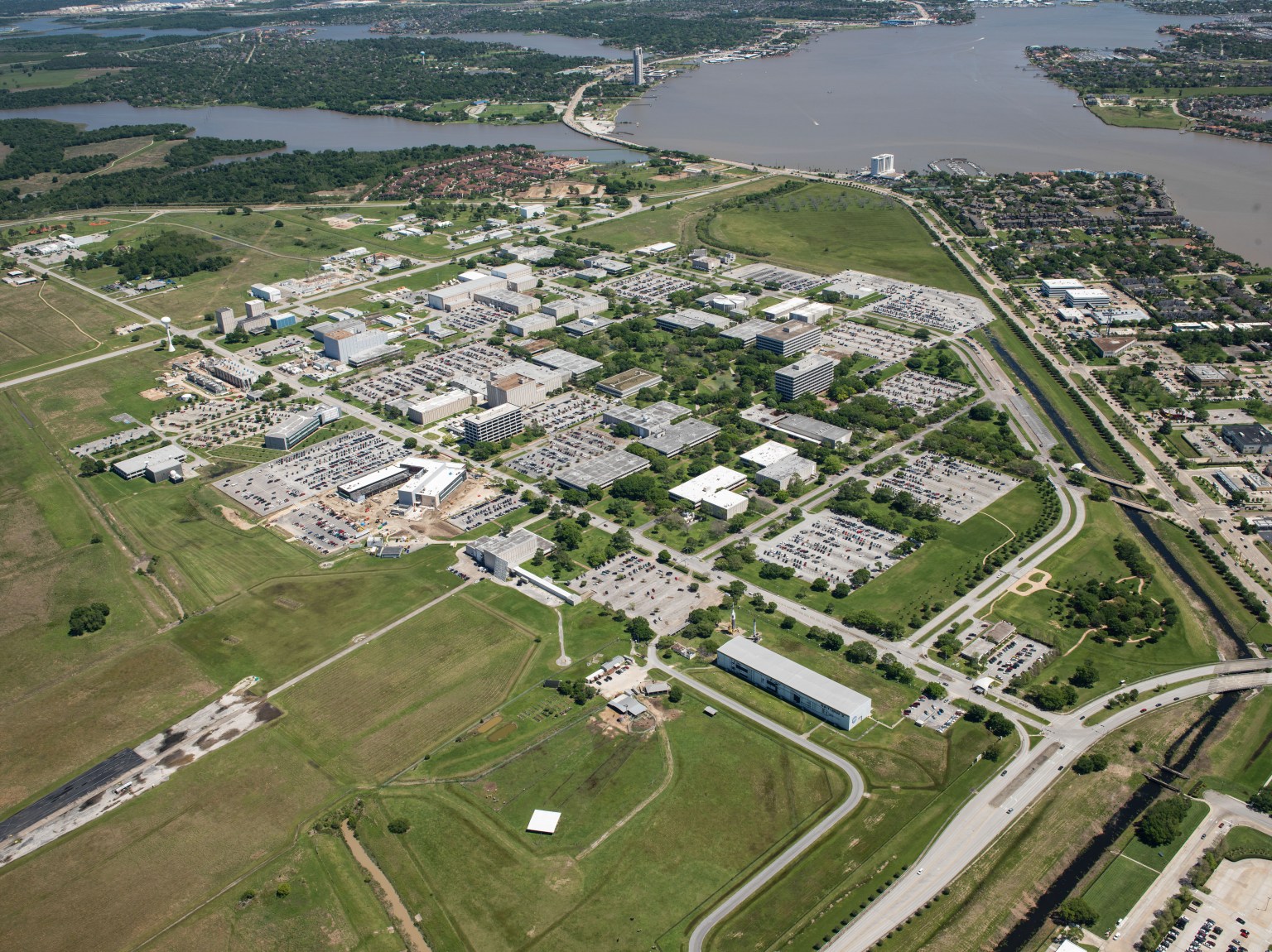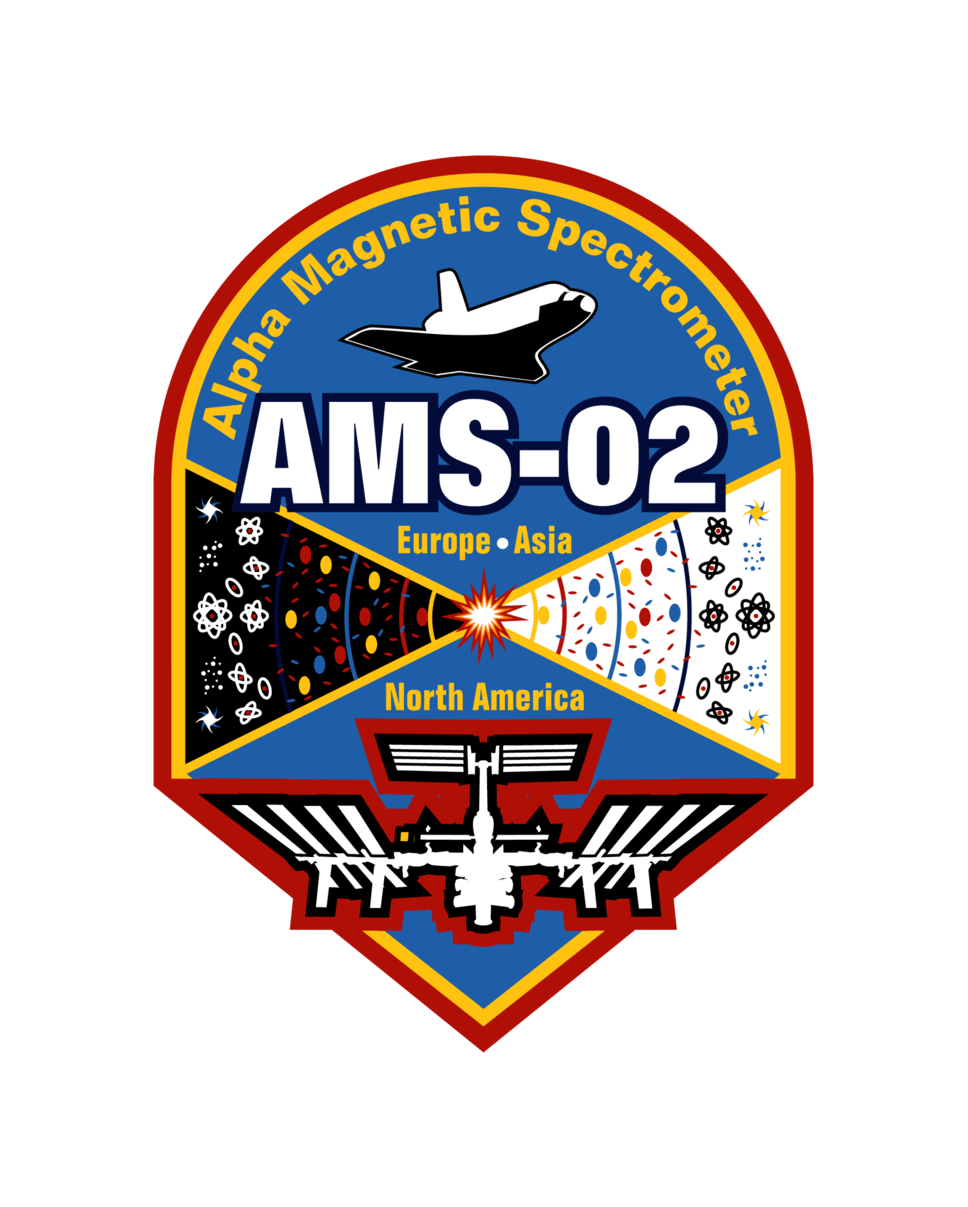
Alpha Magnetic Spectrometer
The Alpha Magnetic Spectrometer (AMS) is a particle physics experiment module that is mounted on the International Space Station (ISS).
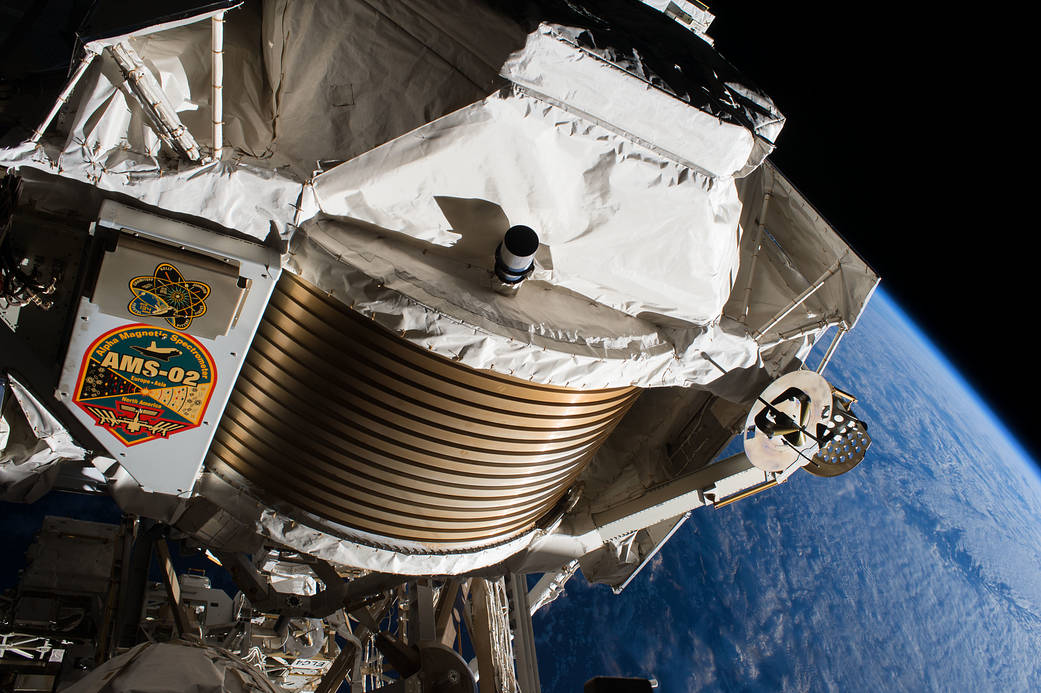
Mission Overview
Launch: 5/16/11
Installation: 5/19/11
Assembly Mission: ULF6
Shuttle Mission: STS-134
Vehicle: Space Shuttle Endeavour
Crew on station: Expedition 27
Johnson Space Center is home to the Alpha Magnetic Spectrometer (AMS) Project Office. The AMS-02 experiment is a state-of-the-art particle physics detector being constructed, tested and operated by an international team composed of 56 institutes from 16 countries and organized under United States Department of Energy (DOE) sponsorship. The JSC project office oversees and directs the overall payload integration activities and ensures that the payload is safe and ready for launch on the Space Shuttle and deployment onto the ISS. The AMS Experiment will use the unique environment of space to advance knowledge of the universe and lead to the understanding of the universe’s origin. The AMS is a high profile space-based particle physics experiment that is led by Nobel laureate Samuel Ting of the Massachusetts Institute of Technology (MIT). The AMS flew in space in June of 1998 aboard the Space Shuttle Discovery (Figure 1), and it is being integrated and tested to fly on the International Space Station (ISS). The AMS-02 will be transported in the cargo bay of the Space Shuttle for installation on the ISS. Once on the ISS S3 Upper Inboard Payload Attach Site, the AMS will remain active for at least three years (Figure 2).
Orbiting the Earth at an altitude of 200 nautical miles, the AMS is pioneering a new frontier in particle physics research for the 21st century. This unique scientific mission of exploration seeks to understand fundamental issues shared by physics, astrophysics and cosmology on the origin and structure of the Universe. Although the AMS is specifically looking for antimatter and dark matter, as the first magnetic spectrometer in space, AMS has and will collect information from cosmic sources emanating from stars and galaxies millions of light years beyond the Milky Way. The technical challenges to build such a detector for use in space have been surmounted through the close collaboration of the AMS scientists and industries around the world whose efforts have resulted in the development of new technologies and higher standards of precision. The experiment (Figure 3) utilizes a large, cryogenic superfluid helium (1.8 K) superconducting magnet to produce a strong, uniform magnetic field (~0.8 Tesla) over a large volume of ~1m3. The magnetic field is used to bend the path of charged cosmic particles as they pass through five different types of detectors. The Transition Radiation Detector (TRD) measures particles passing at speeds nearly that of the speed of light. The Time of Flight (TOF) measures the charge and velocity of passing particles. The Silicon Tracker measures the coordinates of charged particles in the magnetic field. The Ring Image Cerenkov Counter (RICH) measures both the velocity and charge of the particles and the Electromagnetic Calorimeter (ECAL) measures the energy and coordinates of electrons, positrons and gamma rays. Figure 1 shows the AMS detector and its response to different particles or nuclei. The AMS also employs two star trackers and a GPS system. With over 300,000 data channels, the detector gathers an extremely large amount of data which is then processed and sent to Earth utilizing the ISS power, communication and data infrastructure.
Search for Antimatter
All evidence currently indicates that the universe is made of matter; however, the Big Bang theory (Figure 4) of the origin of the universe requires equal amounts of matter and antimatter. Theories that explain this apparent asymmetry violate other measurements. Whether or not there is significant antimatter is one of the fundamental questions of the origin and nature of the universe. Any observations of an antihelium nucleus would provide strong evidence for the existence of antimatter (Figure 5). In 1999, AMS-01 established a new upper limit of 10-6 for the antihelium/helium flux ratio in the universe. AMS-02 will search with a sensitivity of 10-9, an improvement of three orders of magnitude, sufficient to reach the edge of the expanding universe and resolve the issue definitively.
Search for Dark Matter
The visible matter in the universe (stars) adds up to less than 5 percent of the total mass that is known to exist from many other observations. The other 95% is dark – either dark matter (which is estimated at 20% of the universe by weight or dark energy, which makes up the balance). The exact nature of both still is unknown. One of the leading candidates for dark matter is the neutralino. If neutralinos exist, they should be colliding with each other and giving off charged particles that can be detected by AMS-02. Any peaks in the background positron, anti-proton, or gamma flux could signal the presence of neutralinos or other dark matter candidates. Preliminary data from the PAMELA and ATIC missions appears to indicate the existence of such a peak at energy levels well within the range of AMS-02’s capabilities.
Cosmic Ray Measurement
Cosmic radiation is a significant obstacle to a manned flight to Mars. Accurate measurements of the cosmic ray environment are needed to plan appropriate countermeasures. Most cosmic ray studies are done by balloon-borne satellites with flight times that are measured in days; these studies have shown significant variations. AMS-02 will be operative on the ISS for a nominal mission of 3 years, gathering an immense amount of accurate data and allowing measurements of the long term variation of the cosmic ray flux over a wide energy range, for nuclei from protons to iron (Figures 6 and 7). After the nominal mission, AMS-02 can continue to provide cosmic ray measurements. In addition to the understanding the radiation protection required for manned interplanetary flight, this data will allow the interstellar propagation and origins of cosmic rays to be pinned down.
Alpha Magnetic Spectrometer
